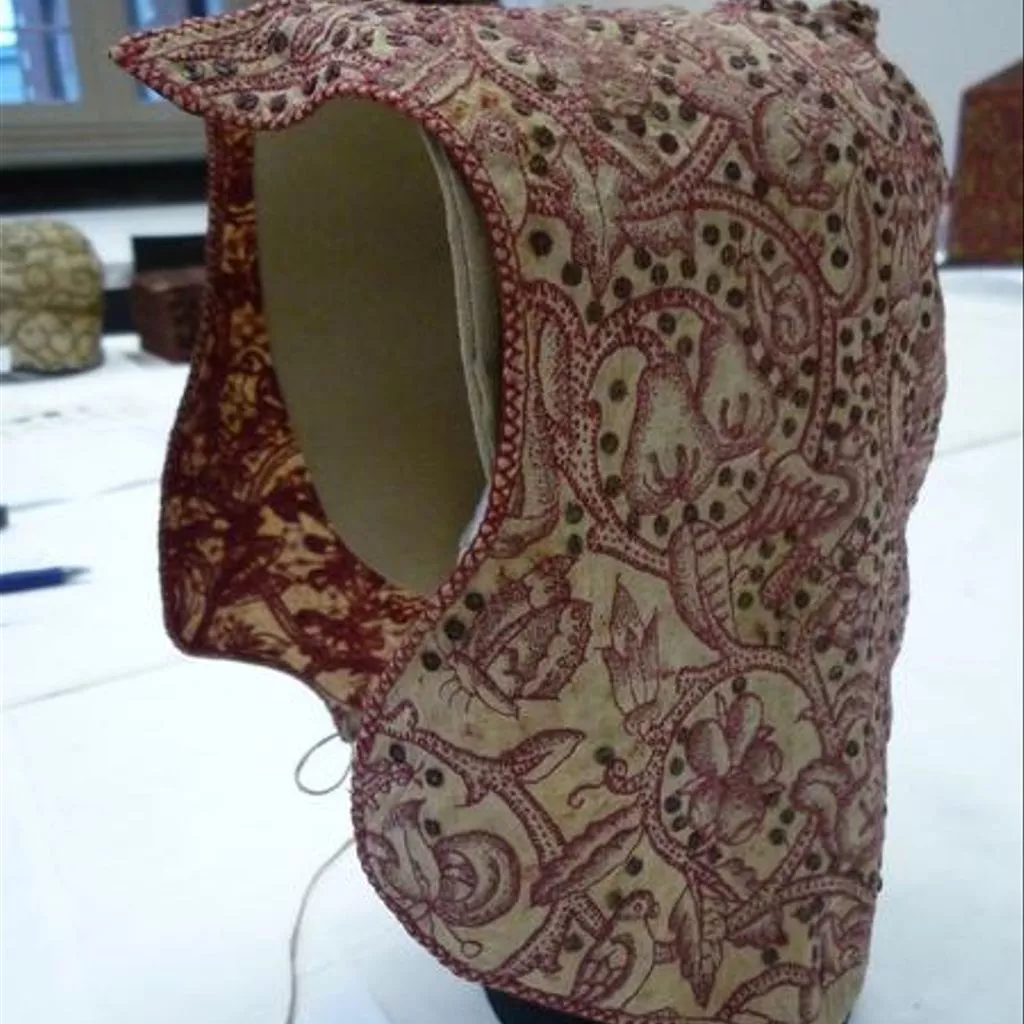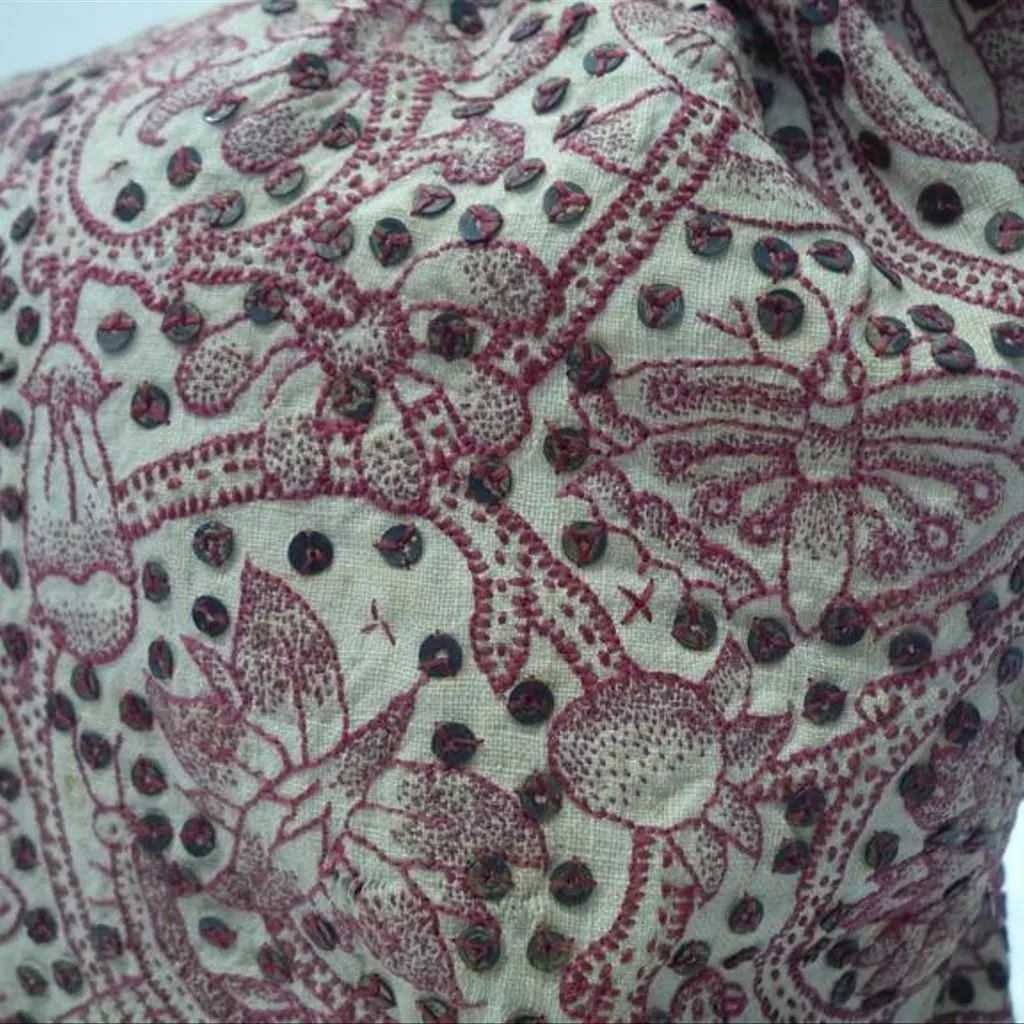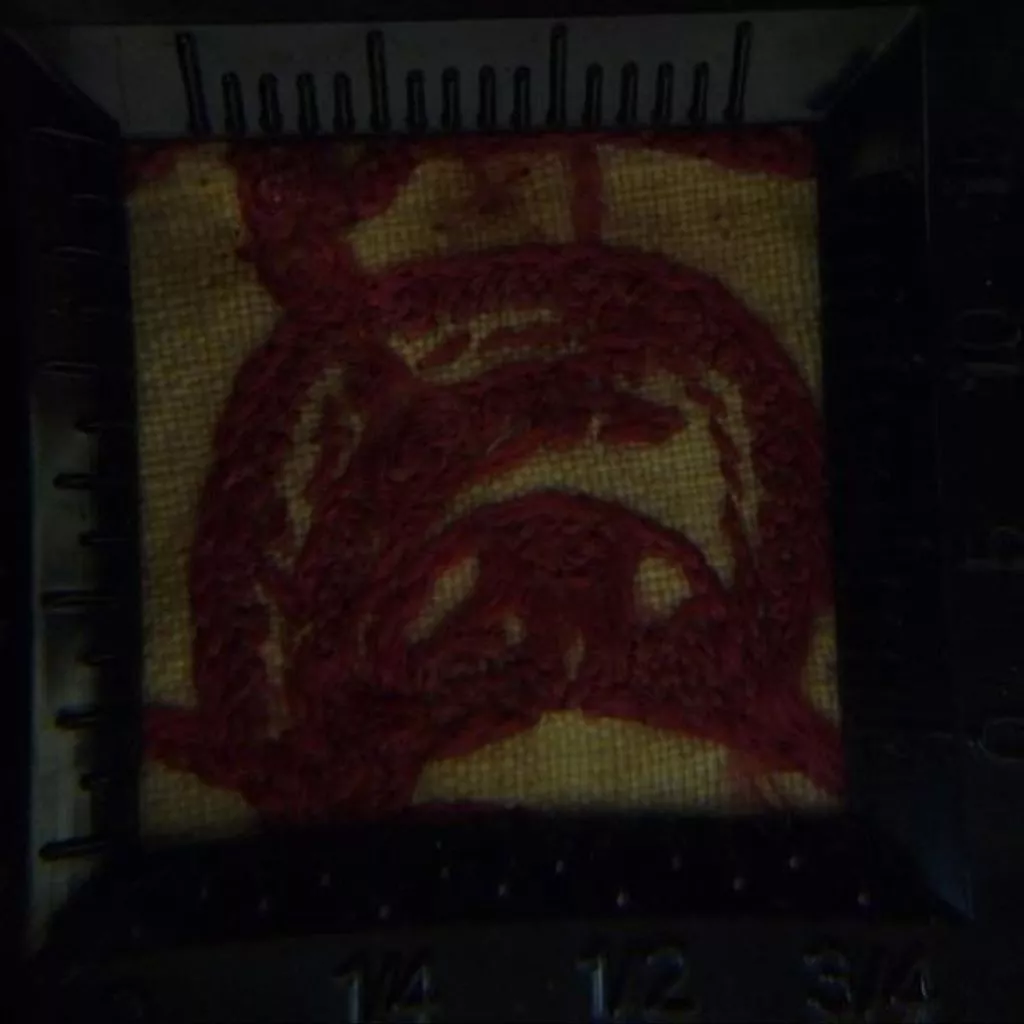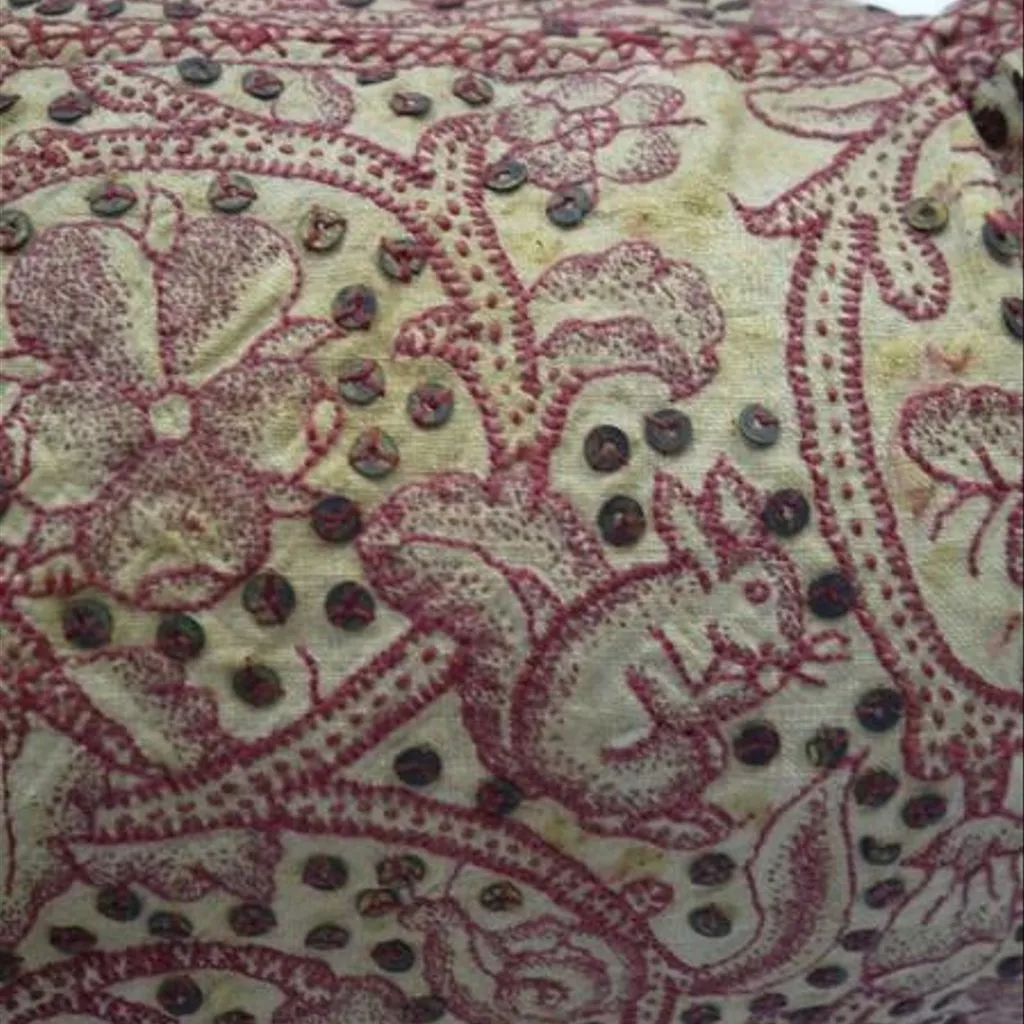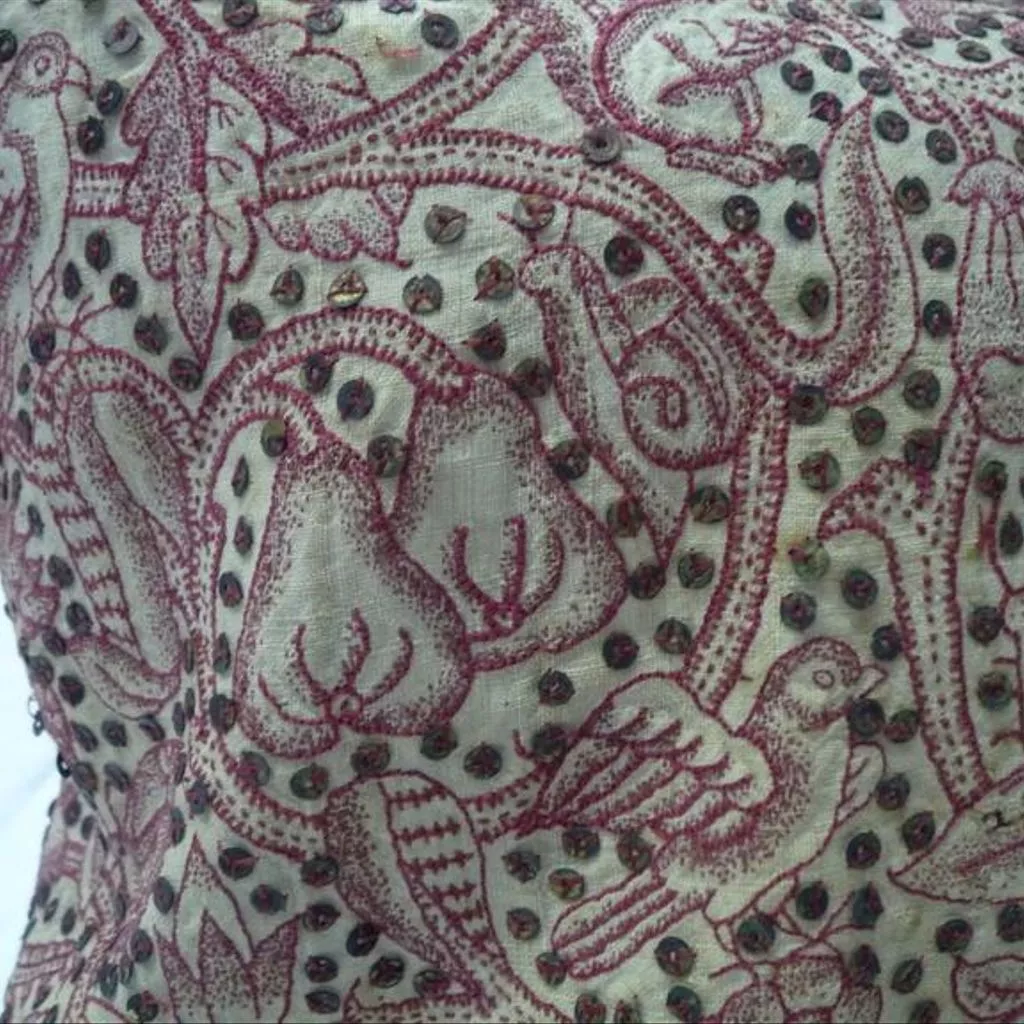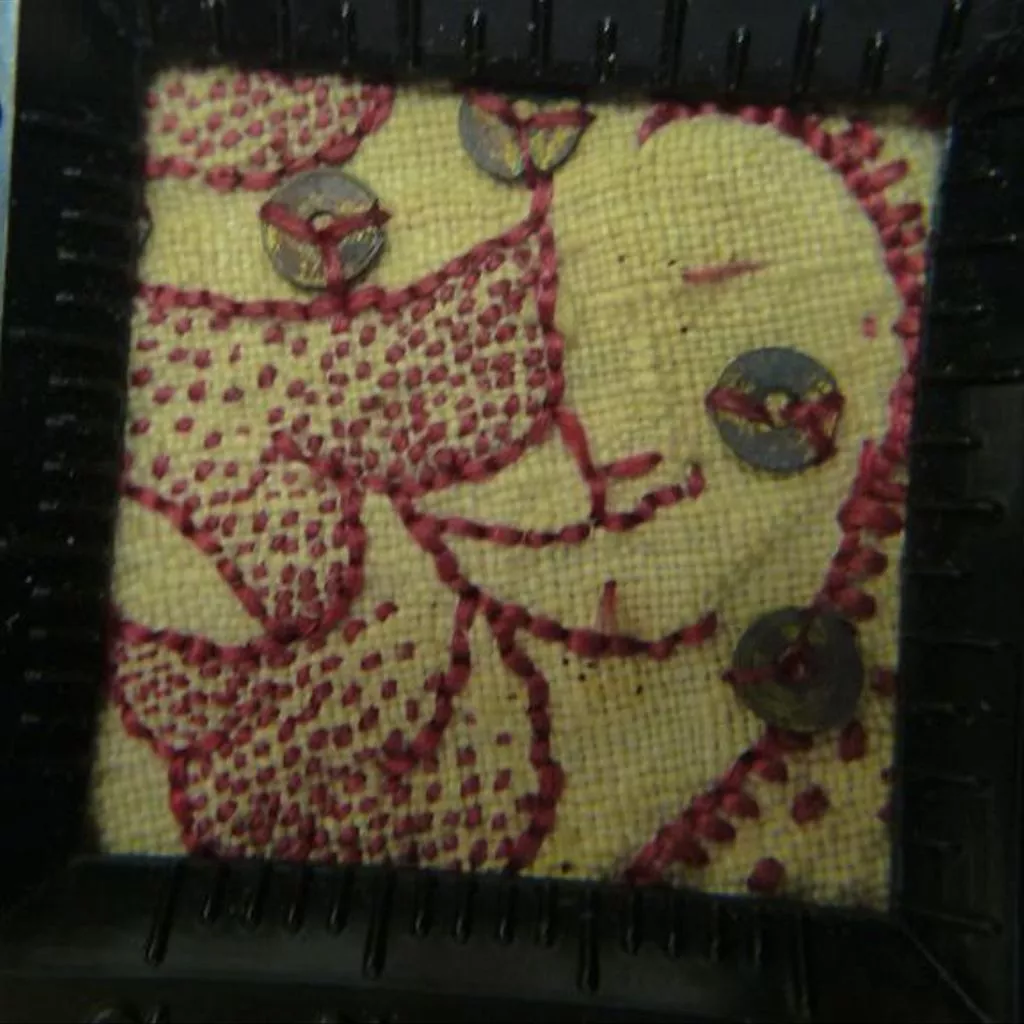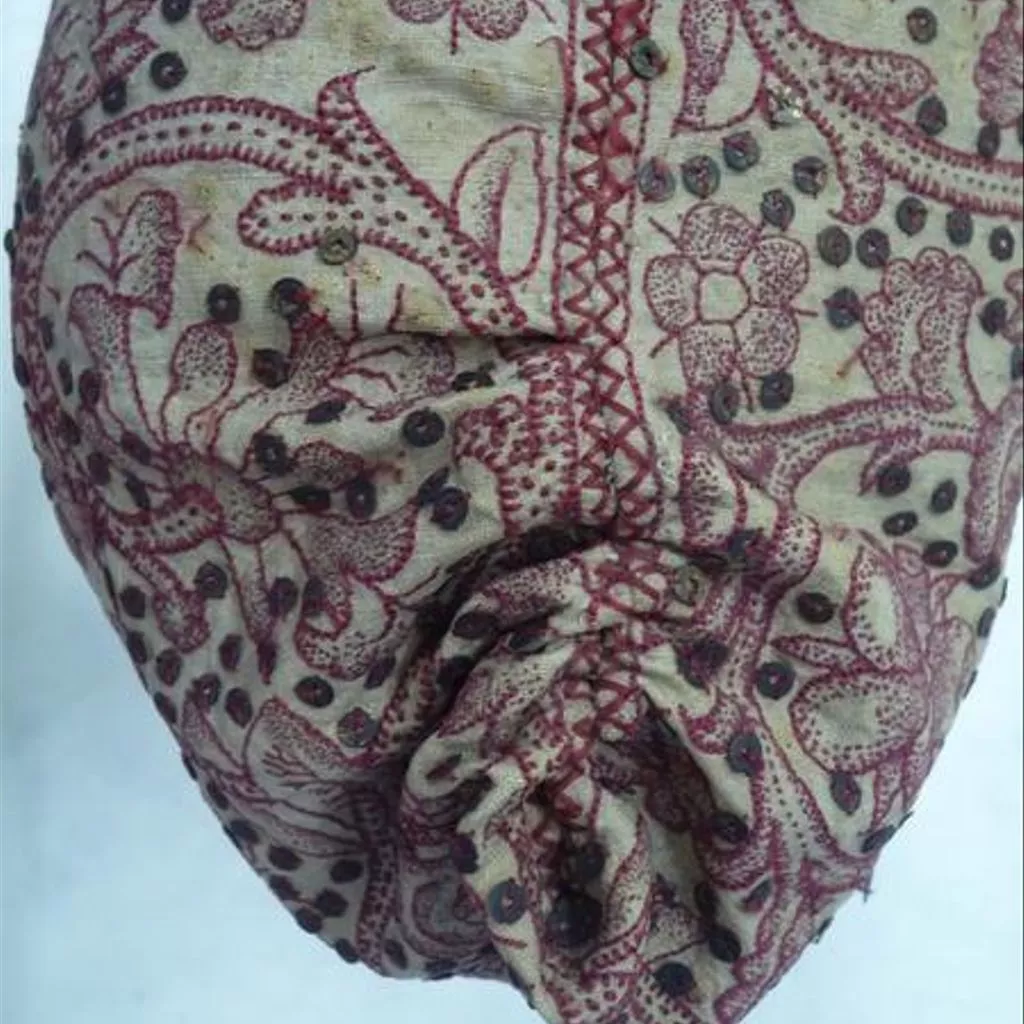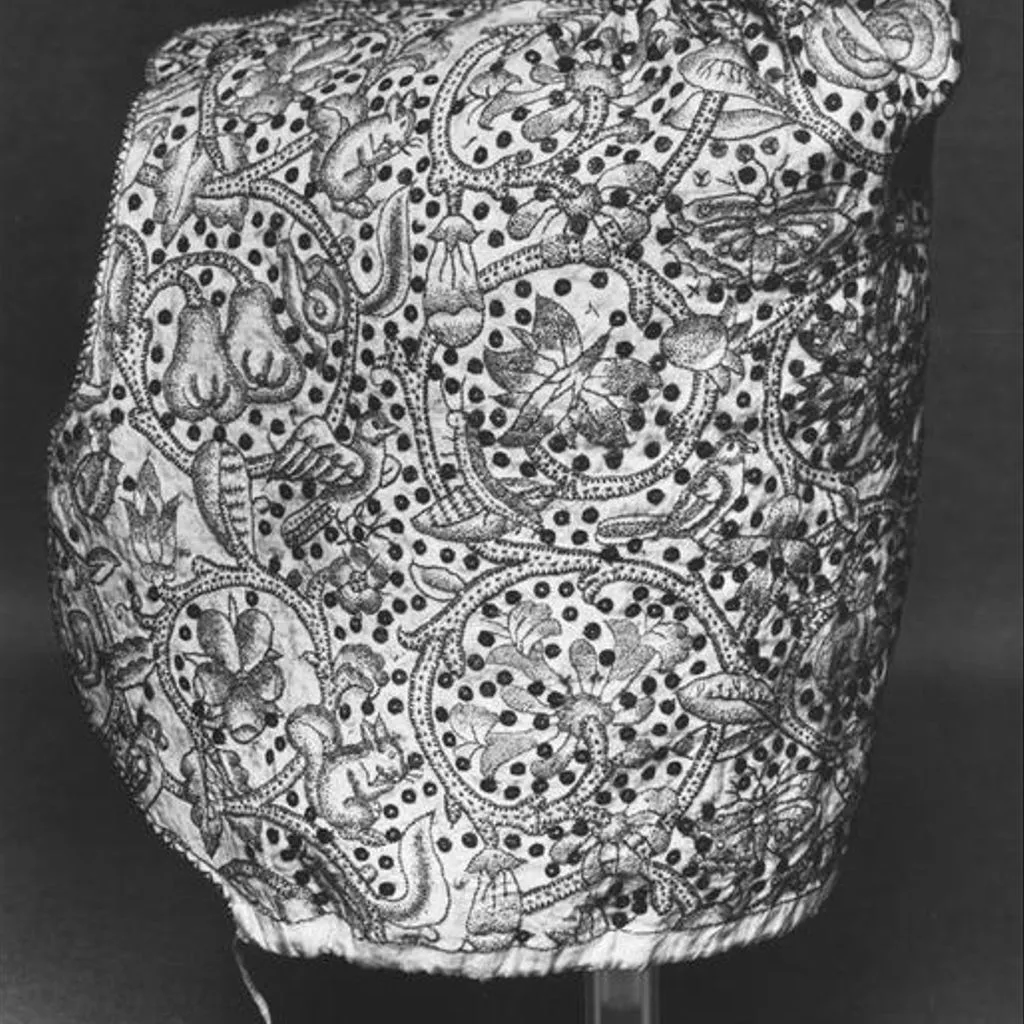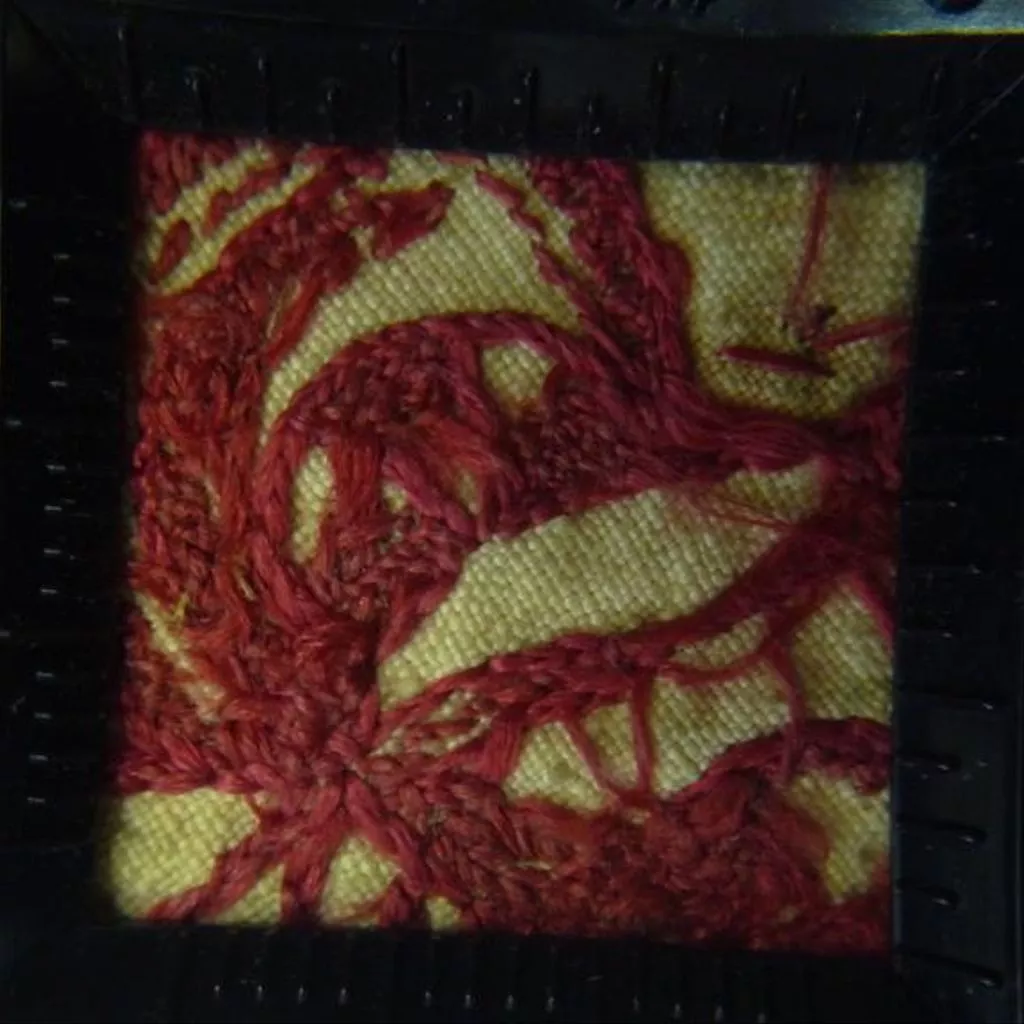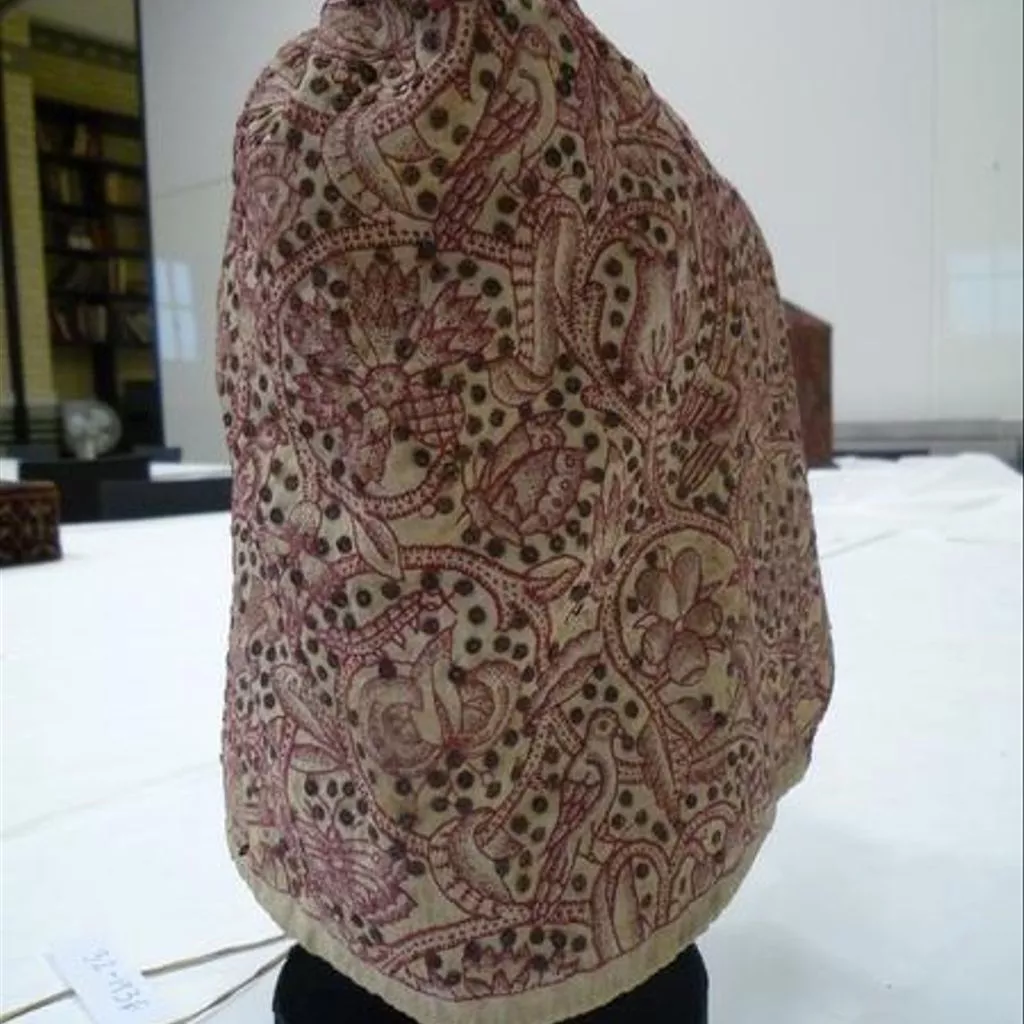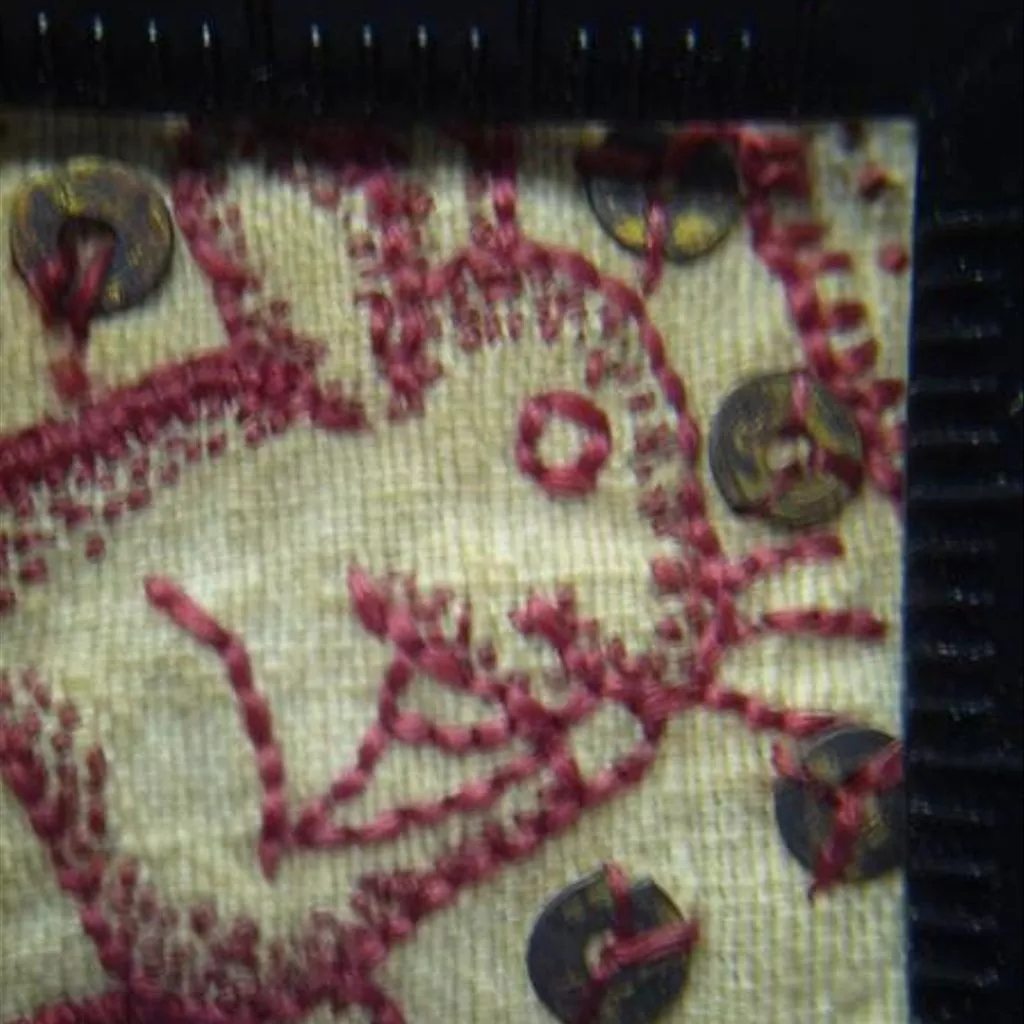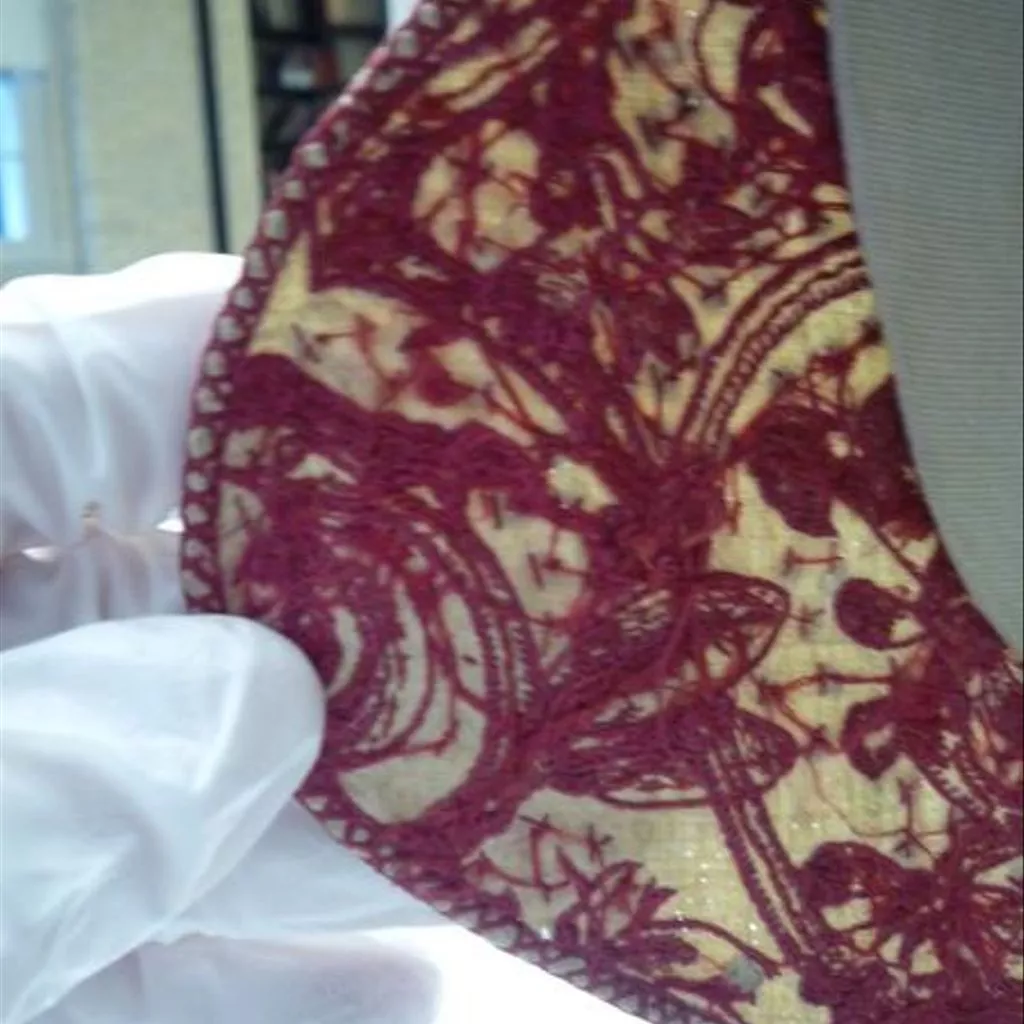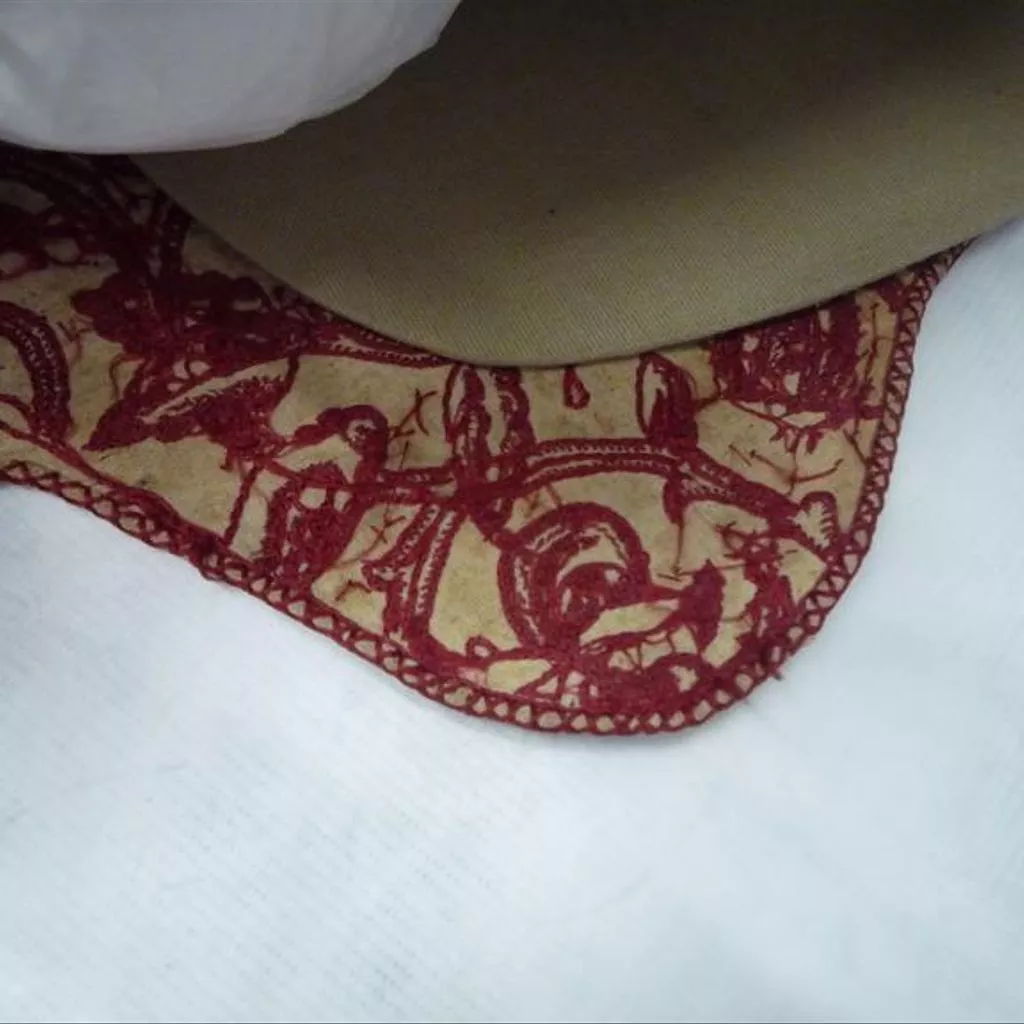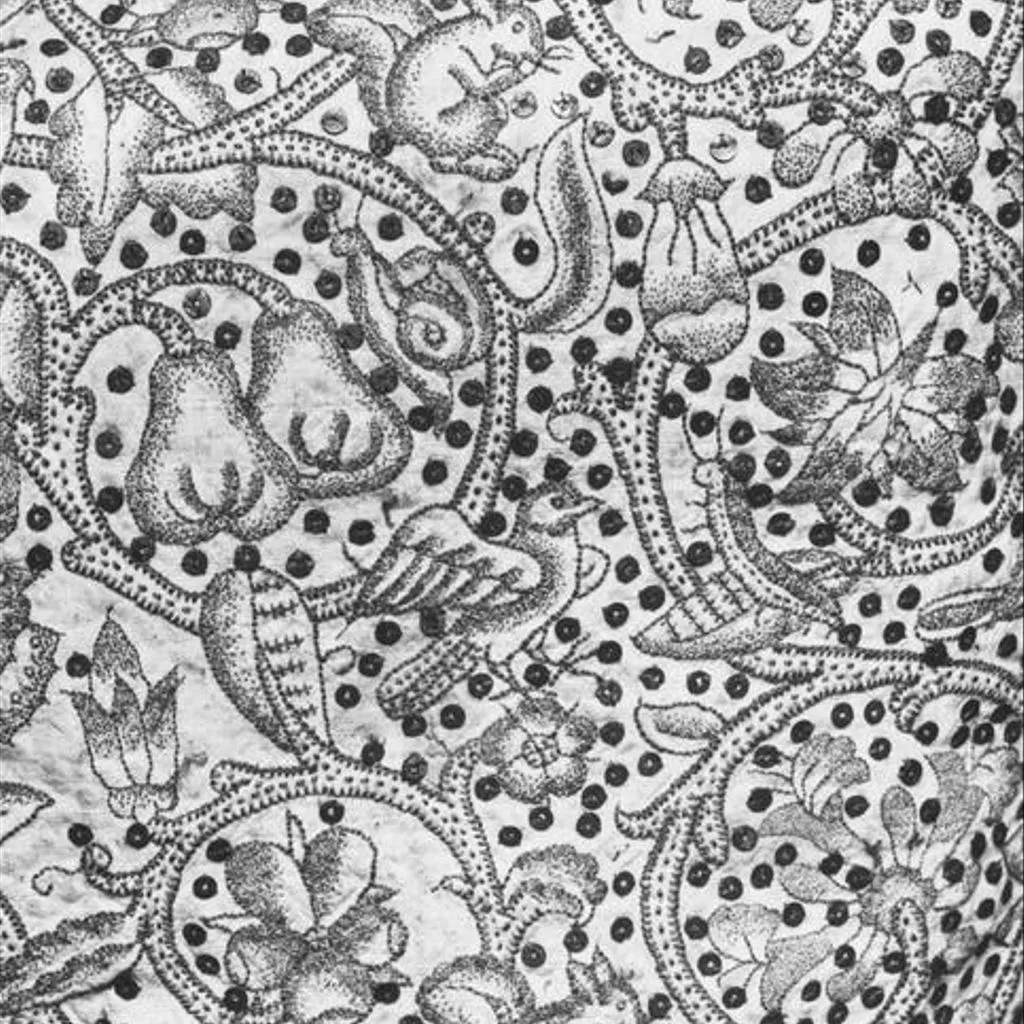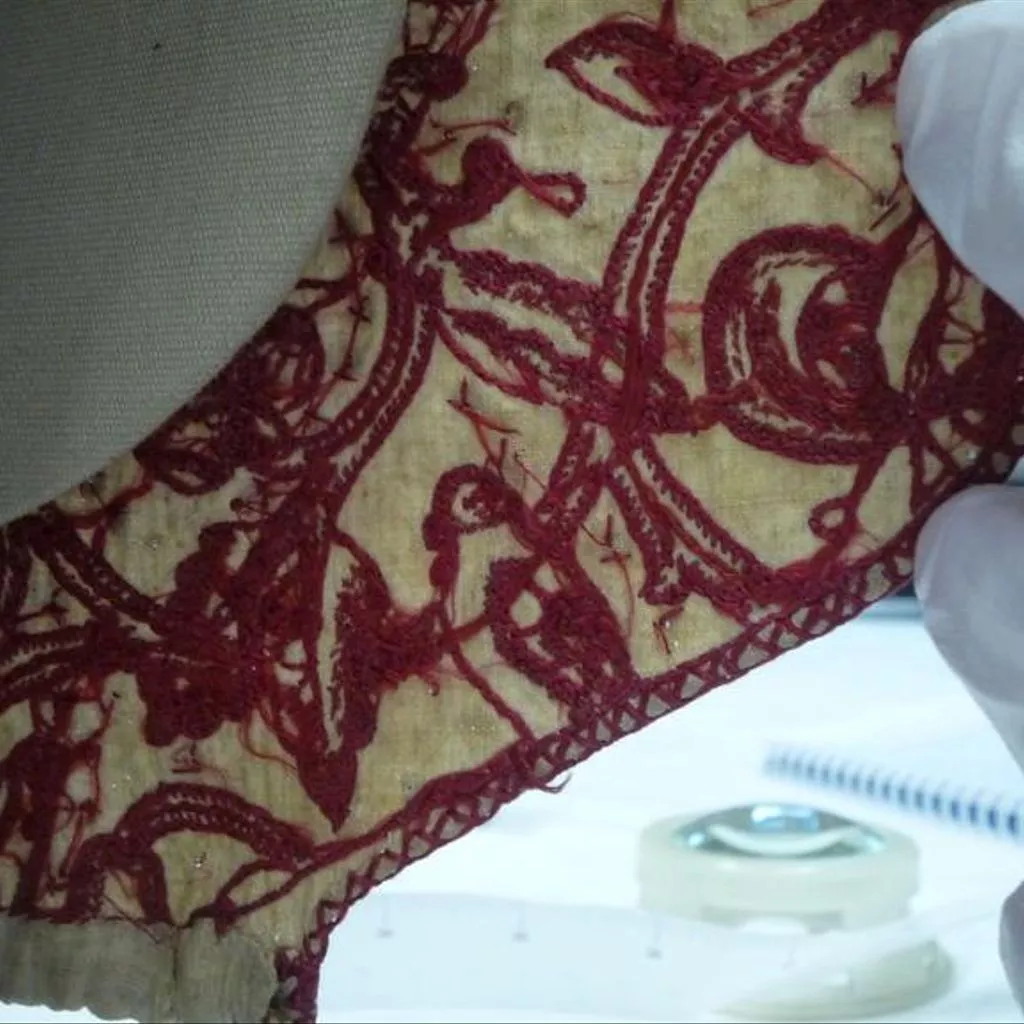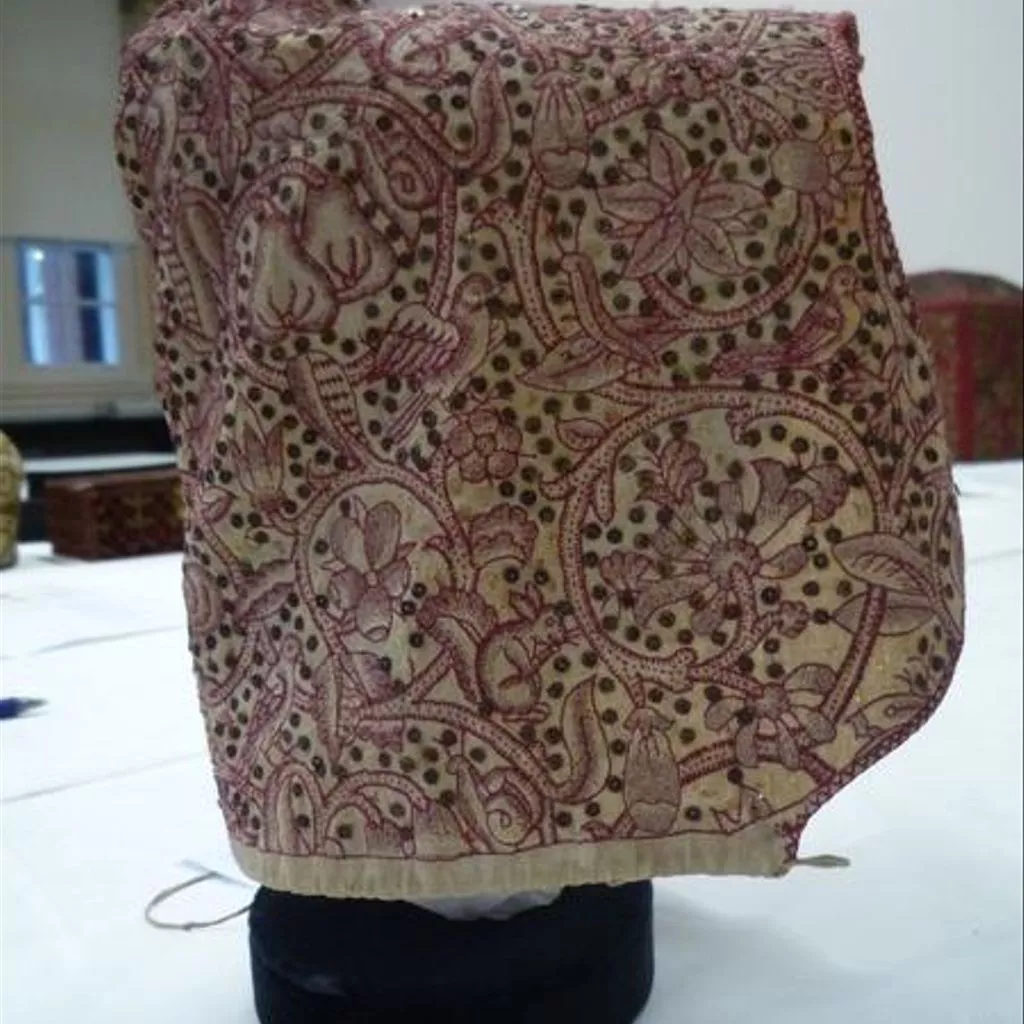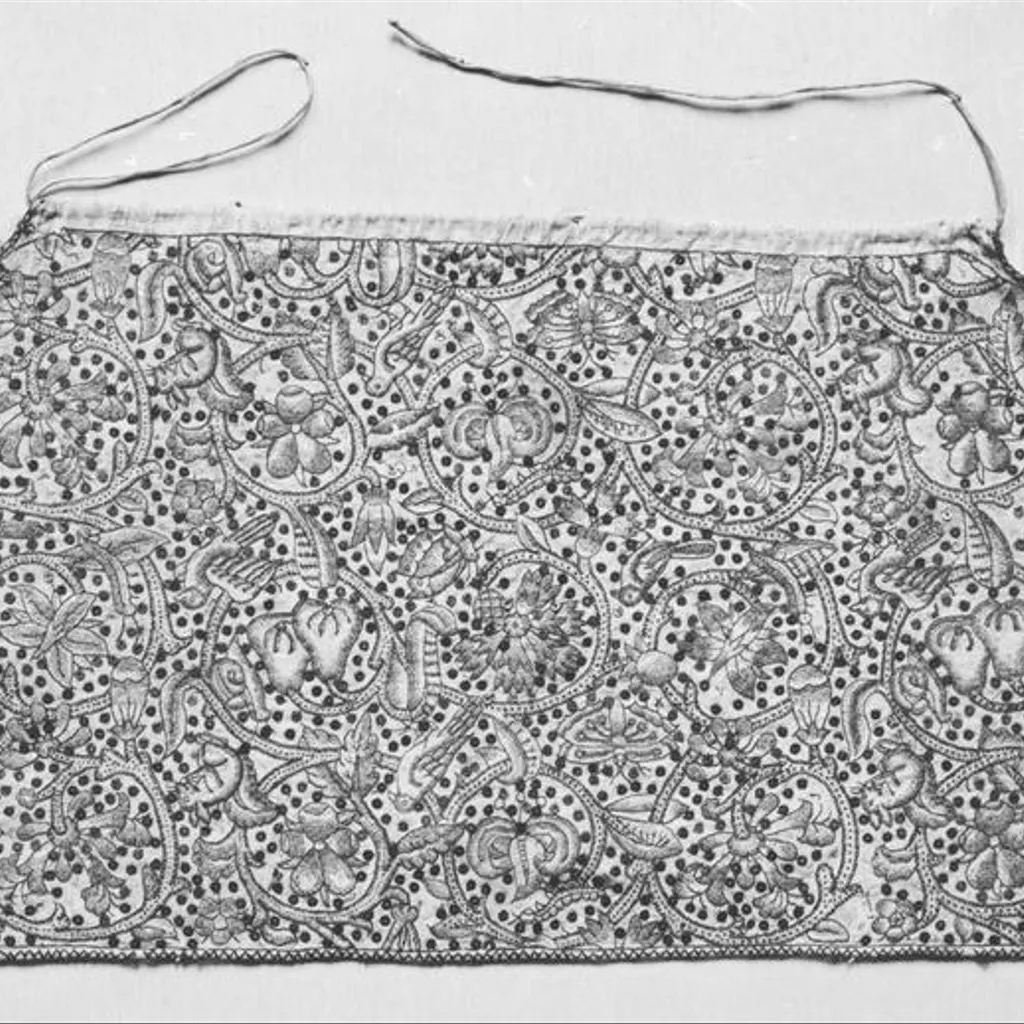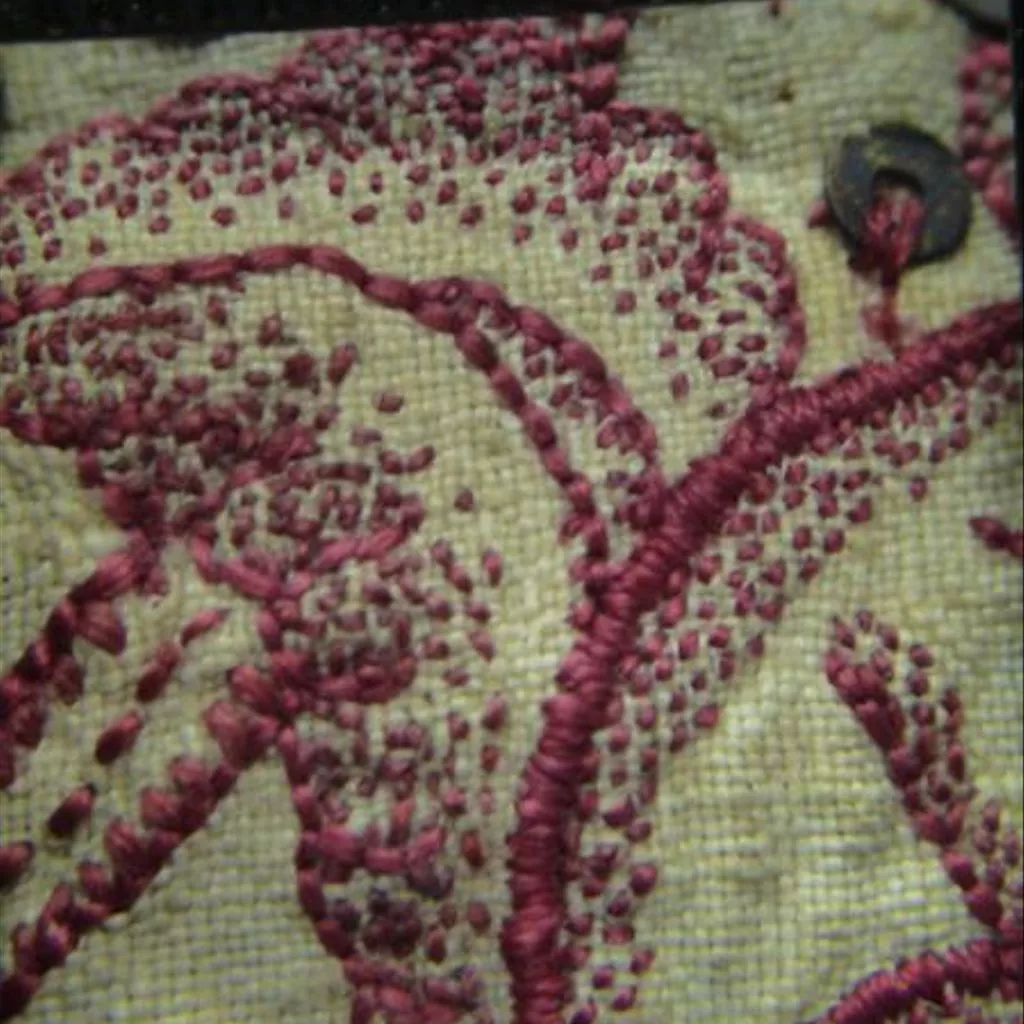Description
A linen coif with casing and original linen drawstring at the bottom. It is embroidered with red silk thread in outline and speckling stitch, powdered with silver-gilt spangles. Herringbone stitch in red silk decorates the front edges. The pattern consists of scrolling stems with pansy, woodbine, lily, pears, borage, cornflower, foxglove, carnation, rose and raspberry, interspersed with birds, squirrels, butterflies, snails and caterpillars. The coif is unlined and the original seam at the top has been unpicked and later re-sewn.
This coif is a fine example of blackwork, a style of needlework popular in England in the late 16th and early 17th centuries. It was worked with a single colour of silk, usually black, but also blue, green or, as in this coif, red on linen. Like other embroidered dress accessories, the needlework on this coif is highlighted with silver-gilt spangles.
Until the end of the 17th century the coif was informal headwear for women. Plain linen versions were worn by the working-class. Middle-class and aristocratic women wore elaborately decorated coifs. It would have been worn by itself indoors, or with a hat on top in public. In Western Europe it was customary for both men and women to cover their heads in public up until the 1960s. A hat was an essential part of respectable dress and, from a health perspective, head coverings were considered necessary to protect against chills and disease.
A woman's coif of linen, 1600-1625, English; Embroidered with red silk with silver-gilt spangles



















































